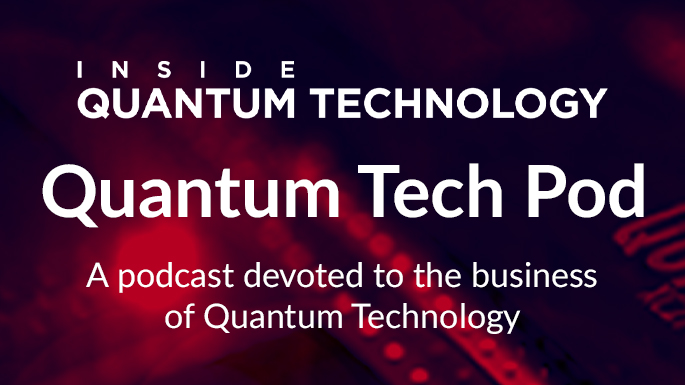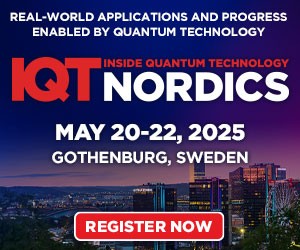Quantum News Briefs October 16: ParityQC & UofInnsbruck Discover Most Efficient Implementation of the Quantum Fourier Transform • IQM Selected to Deliver Two Advanced Quantum Computers as Part of Euro-Q-Exa Hybrid System • AliroNet Quickstart Leverages Entanglement for Secure Communications, Quantum Computing, & Sensing • QuEra Secures Investment from Google Quantum AI to Accelerate Neutral Atom Tech • Can Quantum Computing Solve AI’s Energy Crisis?
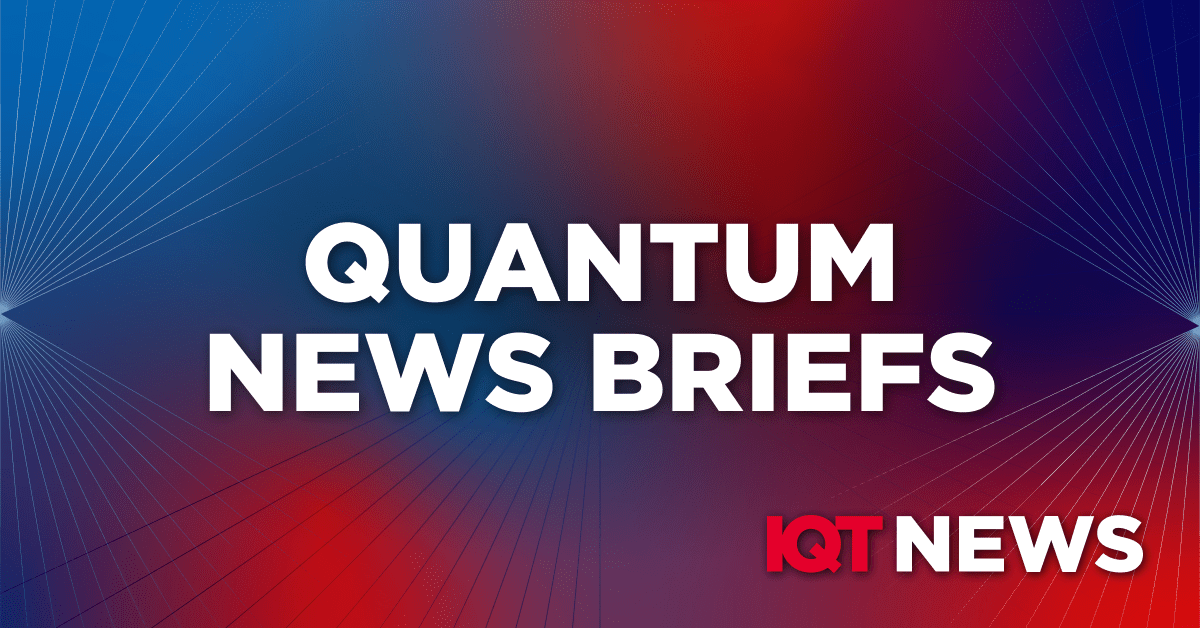
ParityQC & UofInnsbruck Discover Most Efficient Implementation of the Quantum Fourier Transform
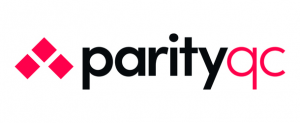 The teams at ParityQC and the University of Innsbruck announced on October 16 their discovery of the most efficient implementation of the Quantum Fourier Transform – one of the most fundamental algorithms in quantum computing – on a linear chain. In the paper “SWAP-less implementation of Quantum Algorithms” they present the novel implementation, which eliminates the need for SWAP or Shuttling operations.
The teams at ParityQC and the University of Innsbruck announced on October 16 their discovery of the most efficient implementation of the Quantum Fourier Transform – one of the most fundamental algorithms in quantum computing – on a linear chain. In the paper “SWAP-less implementation of Quantum Algorithms” they present the novel implementation, which eliminates the need for SWAP or Shuttling operations.
The Quantum Fourier Transform, or abbreviated QFT, is a cornerstone algorithm in quantum computing. It is the basis of several seminal algorithms ranging from Shor’s algorithm, which is one of the grand goals of error-corrected quantum computing, to quantum optimization.
Over the past century, various improvements to the QFT implementation have been suggested, in order to reduce the number of required gates and optimize runtime. This is particularly relevant for quantum systems with limited connectivity, such as a linear chain of qubits. A significant challenge arises from the fact that QFT requires gates to operate between every pair of qubits. On a linear chain, this is not feasible directly, requiring either the movement of quantum information (SWAP operations) or the physical movement of qubits (Shuttling operations).
The ParityQC Architecture eliminates the need for SWAP or Shuttling operations. The teams at ParityQC and the University of Innsbruck have now demonstrated that with the elimination of this overhead it is possible to achieve the most efficient implementation of QFT. In the paper “SWAP-less Implementation of Quantum Algorithms”, the authors (Berend Klaver, Stefan Rombouts, Michael Fellner, Anette Messinger, Kilian Ender, Katharina Ludwig, Wolfgang Lechner) present a new formalism based on tracking the flow of parity quantum information, which is the basis of the implementation. Instead of using SWAP or Shuttling, the method leverages the fact that entangling gates not only manipulate quantum states but can also be exploited to transport quantum information.
IQM Selected to Deliver Two Advanced Quantum Computers as Part of Euro-Q-Exa Hybrid System
 The EuroHPC Joint Undertaking (EuroHPC JU) has signed a purchase agreement with IQM Quantum Computers (IQM), a global leader in designing, building, and selling superconducting quantum computers as per the October 16 news release. Under the agreement, IQM will deliver two advanced Radiance quantum systems of 54 qubits and 150 qubits in the second half of 2025 and by the end of 2026, respectively.
The EuroHPC Joint Undertaking (EuroHPC JU) has signed a purchase agreement with IQM Quantum Computers (IQM), a global leader in designing, building, and selling superconducting quantum computers as per the October 16 news release. Under the agreement, IQM will deliver two advanced Radiance quantum systems of 54 qubits and 150 qubits in the second half of 2025 and by the end of 2026, respectively.
The two distinct systems, featuring high-quality qubits and industry-leading fidelities will play a pivotal role in executing quantum algorithms across a range of application domains.
The systems will be integrated into the high-performance computing infrastructure at the Leibniz Supercomputing Centre (LRZ) of the Bavarian Academy of Sciences and Humanities in Germany and will be accessed by scientists, researchers and European end-users from industry across Europe allowing to utilize fully hybrid HPC-QC workflows developed as part of the Munich Quantum Software Stack (MQSS).
LRZ is one of currently six European sites to operate and further develop hybrid supercomputers, accelerated by quantum technologies for EuroHPC JU. Starting in spring 2025, this system will be made available to the European research community as a first step – a strategic opportunity that contributed to the EuroHPC JU selecting LRZ.
AliroNet Quickstart Leverages Entanglement for Secure Communications, Quantum Computing, and Sensing
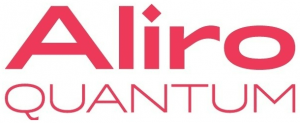 Aliro announced on October 15 the availability of AliroNet® Quickstart owhich includes quantum network hardware devices combined with comprehensive software for orchestration, control, and data plane operation. AliroNet Quickstart is an entanglement-based quantum network implementation for applications including entanglement-based key distribution, networking of quantum processors, and connectivity for distributed quantum sensors.
Aliro announced on October 15 the availability of AliroNet® Quickstart owhich includes quantum network hardware devices combined with comprehensive software for orchestration, control, and data plane operation. AliroNet Quickstart is an entanglement-based quantum network implementation for applications including entanglement-based key distribution, networking of quantum processors, and connectivity for distributed quantum sensors.
Transitioning towards more secure and efficient entanglement-based networks will be crucial in overcoming the security threats posed by quantum computing in addition to classical threats. AliroNet Quickstart can address these threats by eliminating the sharing of public keys and replacing them with an entanglement-based method of generating shared keys. Organizations are able to combine AliroNet with post-quantum cryptography (PQC) to create a layered, defense-in-depth security solution that enables a robust end-to-end quantum-safe posture for data, voice, and video transmission.
AliroNet Quickstart operates as a configurable production, pilot or testbed environment for building and running use cases and applications, and is compatible with multiple types of hardware required at the physical layer to create and measure the entangled photons.
QuEra Secures Investment from Google Quantum AI to Accelerate Neutral Atom Tech
 QuEra Computing announced on October 15 an investment in QuEra by Google Quantum AI. The investment marks a significant milestone in QuEra’s journey to develop and make available useful, scalable and fault-tolerant quantum computers and affirms the recent significant technical progress made by the company.
QuEra Computing announced on October 15 an investment in QuEra by Google Quantum AI. The investment marks a significant milestone in QuEra’s journey to develop and make available useful, scalable and fault-tolerant quantum computers and affirms the recent significant technical progress made by the company.
The investment builds on a collaboration with Harvard and MIT, based on the groundbreaking research led by the laboratories of Mikhail Lukin, Vladan Vuletic, and Markus Greiner. Google Quantum AI’s investment in QuEra’s neutral atom technology adds to its portfolio of primary work in superconducting qubits. For QuEra, the investment will help to accelerate technology advancements in the neutral atom space, such as developing quantum error correction capabilities needed to deliver quantum computing solutions and delivering additional capabilities outlined in QuEra’s strategic roadmap, publicly announced in January 2024.
“Google Quantum AI’s strategic investment in QuEra, which we recently closed, is a testament to the strength of our technology, our world-class team, and our long-term partnerships with Harvard and MIT,” said Andy Ory, Interim Chief Executive Officer of QuEra. “This investment from Google Quantum AI, coupled with an additional financing initiative to be announced in the coming weeks, allows us to execute on our vision and company strategy, and positions us as the recognized market leader for neutral atom-based quantum computing solutions.
In Other News: Oil Price Discusses “Can Quantum Computing Solve AI’s Energy Crisis?”
Haley Zaremba discusses each of these points in her October 15 article in OilPrice online.
- AI’s energy consumption is projected to surge in the coming years, straining power grids and potentially hindering decarbonization efforts.
- Quantum computing offers a potential solution by significantly reducing the energy required for AI processing.
- A multifaceted approach, including grid modernization, renewable energy integration, and advancements in nuclear and fusion technology, will be necessary to address AI’s energy demands sustainably.
Artificial Intelligence poses an unprecedented threat to energy security in the Global North which could seriously derail decarbonization goals, place immense strain onto power grids, and cause volatility in energy markets, which will inevitably extend to the economy writ large.
By 2030, AI is expected to represent 3.5 percent of the global electricity consumption, and 9 percent of electricity generation in the United States.
Bill Gates and Sam Altman are calling for increased investing for nuclear fusion research as a potential way to unlock massive amounts of clean energy.
One potential solution may be found through quantum computing. However, quantum computing still has quite a ways to go before it becomes a commercial reality, a broad approach to boosting clean energy as well as energy efficiency is the order of the day.
Barclays’ Will Thompson, who recently co-authored research on AI power consumption, solving the AI energy puzzle “will require an above-all-approach of expanding and modernizing electric grid infrastructure, integrating renewables with utility-scale storage, utilizing our existing nuclear capacity, and scaling new forms of carbon-free energy. That will include geothermal, advances nuclear small modular reactors (SMRs) and fusion technology.”

